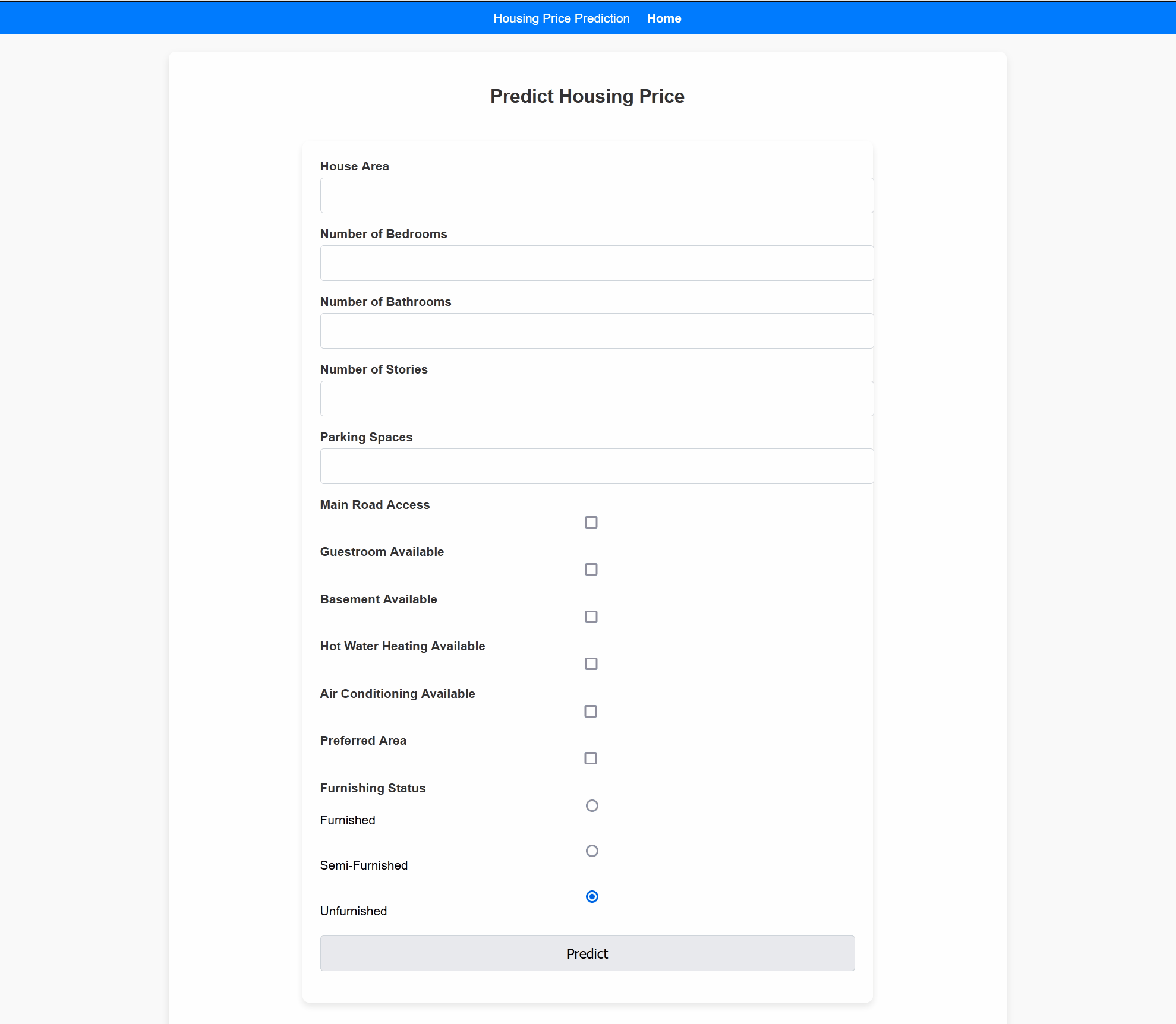A Flask-based web application that predicts house prices based on user input. The application uses a trained machine learning model to make predictions.
- Predicts house prices based on various input features such as area, bedrooms, bathrooms, and more.
- Machine learning pipeline with preprocessing, feature engineering, and model selection.
- User-friendly interface built with Flask and HTML/CSS.
Source: Kaggle Housing Prices Dataset
Description: This dataset contains features such as area, bedrooms, bathrooms, and other attributes of houses, along with their respective prices.
The application uses a LightGBM Regressor, selected after training and evaluating the following models:
- Linear Regression
- Ridge Regression
- Lasso Regression
- Random Forest Regressor
- LightGBM Regressor
- Numerical Features: Scaled using
MinMaxScaler. - Categorical Features:
- Ordinal features encoded using
OrdinalEncoder. - Nominal features encoded using
OneHotEncoder.
- Ordinal features encoded using
- A
Pipelinewas used to combine preprocessing and model training steps. - Hyperparameter tuning was performed using
GridSearchCVwith 5-fold cross-validation. - Metrics used for evaluation included:
- Mean Absolute Error (MAE)
- Mean Squared Error (MSE)
- Root Mean Squared Error (RMSE)
- Mean Squared Logarithmic Error (MSLE)
- The LightGBM Regressor was the best-performing model with optimized hyperparameters.
- The model achieved an R² score of 0.6 on the test dataset.
-
Clone the repository:
git clone https://github.com/spicyneutrino/Housing-Prediction.git cd Housing-Prediction -
Create a virtual environment:
python3 -m venv venv source venv/bin/activate # On Windows: venv\Scripts\activate
-
Install the required dependencies:
pip install -r requirements.txt
-
Run the application:
flask run
Open your browser and go to http://127.0.0.1:5000/.
Below is a demo of the Flask application in action:
This project is suitable for deployment on Heroku.
- Enhanced User Interface: Improve the web design for a more modern and intuitive experience.
- Additional Features: Incorporate more house attributes such as proximity to schools or public transport.
- Model Expansion: Experiment with other advanced models or ensemble techniques for improved accuracy.
- API Integration: Develop APIs to allow external applications to interact with the prediction service.
- Cloud Deployment: Deploy the application on other platforms like AWS or Azure for scalability.
- Dataset: Kaggle Housing Prices Dataset
- Technologies: Flask, Python, and Scikit-Learn.
- Machine learning model tuned with LightGBM and GridSearchCV.
